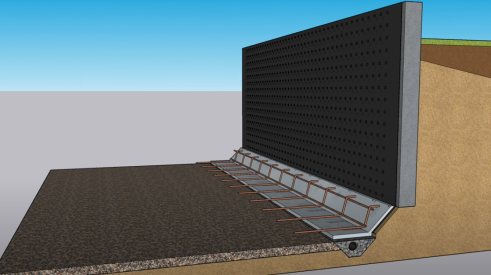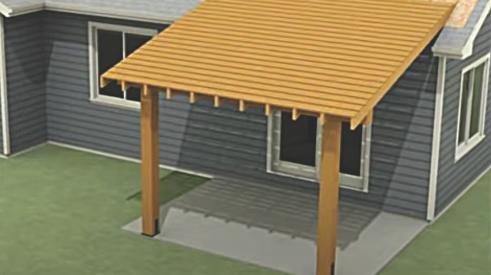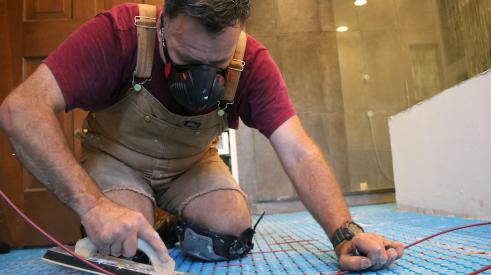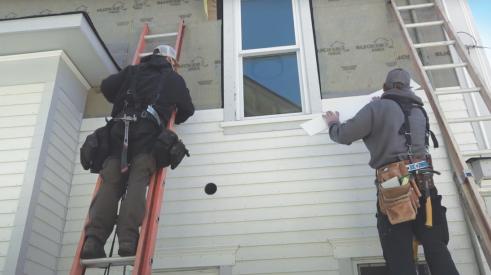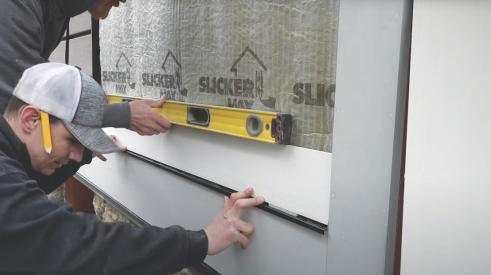
Using a drywall router is a lot like routing wood or laminate with a guide bit. The drywall-cutting bit we use for electrical boxes has a “guide point”—a ring around the tip that won’t cut into the edge of the box, so it acts just like a guide collar [A]. The process is more or less the same whether you’ve traced the outline of the box or just marked the center.
To make a cutout with only a center mark to work with, turn the router on, then poke the bit through the drywall at the center mark and work toward the edge of the box [B]. When you hit the edge, pull the router back just enough to “jump” over the edge of the box, which moves the bit from inside to outside the box. From there, work counterclockwise, keeping the tip of the bit in contact with the box all the way around. Slow down at the corners to prevent over-shooting (something that gets easier with practice).
If you’ve used magnets or some other method to locate and trace the outline of the box, you can start the bit on the outside of the box by plunging through the drywall on or immediately next to your outline [C]. From there, press the tip toward the box to make sure you are, in fact, on the outside of the box, and work counterclockwise to make the cutout.
Either way, the result is a clean cutout that will be easily concealed by a standard coverplate [D].
Add new comment
Related Stories
How to Retrofit Foundation Footings
To make a low-height basement a more comfortable living space, this remodeler digs deeper but needs to add support to do so
Crawl Spaces to Basements: Proceed with Caution
Converting a crawl space to other uses can upgrade a home and add significant value, but when done incorrectly, it can also be disastrous
The Ins and Outs of Pedestal Tile Systems
A non-exhaustive overview of all things pedestal tile systems
How to Attach a Patio Roof to an Existing House
A graceful integration may mean more work but improved functionality and aesthetics
6 Tips for Electric Floor Heating Systems
These quick tips and tricks provide a base knowledge to begin your floor heating education
How To Improve Energy Performance in Existing Attics
There’s more to insulating the attic than attic insulation; there’s venting, air sealing, and misery
How to Install PVC Bevel Siding Over Rainscreen
It’s a lot like installing wood bevel siding, except it won’t warp or rot. And it expands and contracts differently and for different reasons
Understanding How PVC Trim Moves
Anybody who’s used PVC in an exterior application knows that it moves seasonally. Just like wood, right? Not exactly
To Vent or Not to Vent: A Discussion
In an attempt to strike a middle ground between high-performance and attainable, these three remodelers engage in a candid conversation



